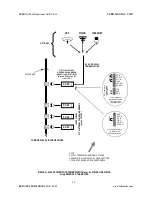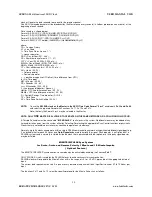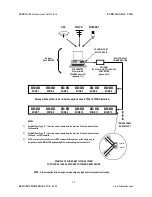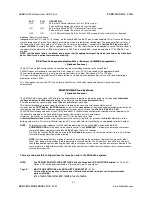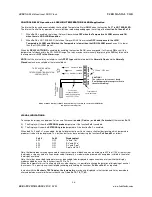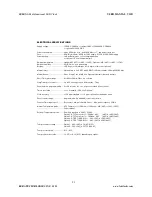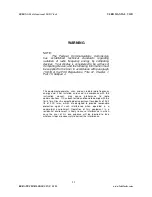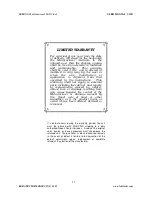
SELENA
Multifunctional LED Clock
USER MANUAL V32D
KERA TECHNOLOGIES INC. 2013
www.ledclocks.com
46
CONTROL RELAY Operation in LOW/HIGH TEMPERATURE ALARM application
The Internal Relay can be controlled by the Low/High Temperature Alarm
ONLY
when the function
Fn 37 is NOT ENABLED
.
The Internal Control Relay operates in several different modes depending upon the setting of the
function Fn 18 and Fn 16
.
1.
When
Fn 18
is enabled, the Internal Relay will be switched
OFF when the Temperature ALARM occurs and ON
when there is NO ALARM condition.
2.
When
Fn 18
is NOT ENABLED, the Internal Relay will ONLY be switched
OFF in response to the HIGH
Temperature ALARM and ON when the Temperature is lower than the HIGH ALARM preset
, even if it is lower
than the LOW ALARM preset.
When the
RELAY LATCHING
is enabled (by enabling the function
Fn 16
), once energized, it will remain
ON
even if the
temperature falls back within the NO-ALARM range. The relay may be reset manually by pressing the
CLR
key twice while
the temperature is
NOT in the Alarm
range.
NOTE
, that the internal relay installed is usually
SPDT type
and therefore both the
Normally Open
and the
Normally
Closed
contacts are available at the terminal block.
VISUAL INDICATIONS
To change the display unit between Celsius and Fahrenheit,
enable ( Celsius ) or disable ( Fahrenheit )
the function
Fn 15
.
A) The Display will show the
INTERNAL probe
temperature if the function
Fn 0
is enabled.
B) The Display will show the
EXTERNAL probe
temperature if the function
Fn 1
is enabled.
When both Fn 0 and Fn 1 are enabled, the digital display section will also show a short text designating which temperature
probe test is about to be displayed. This text contents may be selected using the functions
Fn 94 and 95
as follows.
Fn 94
Fn 95
Displayed text
0FF
OFF
“In” and “Out”
0N
OFF
“Air” and “h2o”
0FF
ON
“Air” and “Pool”
0N
ON
“Pool” and “Out”
Note, that both probes may be connected to the external terminal block and may be wired up to 500 feet ( 150 m ) away from
the display, using any kind of a 2-conductor cable. Optionally, a model may be ordered with one probe installed in the wall of
the display enclosure.
Note, that either one or both temperatures may be enabled to be displayed in sequence alone or also with other display
modes enabled by any of the functions from Fn 2 to Fn 7.
When the temperature is set to alternate with any other display, it is possible to change the duration of displaying of each of
the screens. This persistence is controlled by enabling or disabling the functions
Fn 40
and
Fn 41
as required.
In clocks with the
Electronic TEXT display, the temperature
may be also displayed in that section and it may be made to
alternate between several different screens as well (
see Fn 75, 76, 77, 85
).
Terminal block
on the back panel
C
tr
l.
C
o
n
ta
ct
s
P
R
O
B
E
TO THE HEATING SYSTEM
OR
TO THE AIR CONDITIONING SYSTEM
CONTROL INPUTS
E
xt
er
na
l T
em
pe
ra
tu
re
P
R
O
B
E
NORMALLY OPEN
NORMALLY CLOSED
Use any type
2-conductor cable to
extend the probe wiring
up to 500 ft ( 150m )
Wiring for ONLY Heating ( or ONLY Air-Conditioning ) system with one Internal SPDT Relay
and with one external probe.
COMMON
10 Amp. , 250V max.
CAUTION !
The relays contacts are not fused.
Provide appropriate fuse protection in
the external wiring !

